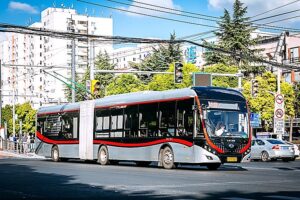The future is not evenly distributed
Greg Reid
It has been assumed by most western economists that as China develops, its rate of growth will slow and then keep pace with developed economies like our own. An example of this thinking is the acceptance at the Paris climate accords of China’s argument that it will need to continue to increase its green-house gas emissions, in parallel with its economic development, until 2030.
China is by far the largest emitter of greenhouse gases on the planet. Any attempt to rein in global warming is largely futile until China begins to move away from fossil fuels. China had pledged to replace coal power with increasing amounts of nuclear power but has found it increasingly difficult to meet its own targets. This is not because of internal commercial interests opposed to climate action or doubt around the scientific realities. The reality is that nuclear power is expensive and difficult.
In the meantime, economic planners in China recognised there would be a global demand for renewable energy technologies. Money was created via the central bank to provide investment funding so that now China is the largest global producer of solar panels, wind turbines, batteries and electric vehicles. Massive scaling of production has dramatically reduced prices which in turn has led to a pragmatic change in policy.
In May this year it was reported that in 2023 alone, China installed the equivalent of 400TWh of annual renewable energy which is the equivalent of 40 large nuclear reactors (1). China is installing so much wind and solar that it now expects its greenhouse gas emissions to peak next year, six years earlier than forecast. This achievement is good news for everyone and should be applauded.
A parallel driver of this change in atmospheric emissions is the electrification of transport. In 2022 alone, over 138,000 electric buses (2) and 36,000 electric trucks (3) were sold in China. Total plug in car registrations in China reached 800,000 in 2023 (4). In major cities like Beijing and Shenzen, the skies are noticeably clearer and the streets are quieter. It appears that the future is arriving early in many parts of China and well before it arrives in the West.
Cheap power and efficient transport are strong economic advantages, and in China it is combined with advanced manufacturing and cutting edge technology across many areas. According to the head of ARENA (5), the Australian government “Solar Sunshot” is not aimed at competing with the unbeatable China advantage but in trying to partner with it, before Australia is left entirely behind. The success of this more mature approach to the “China Problem” may depend on whether China sees an ongoing need for us.
China has not turned to renewable energy to be a good global citizen but because it saw economic opportunity. China has exploited deficit spending, in ways consistent with MMT insights, to turn that opportunity and others into advantages that are propelling that nation far ahead. Western countries, misled by classical economics, delayed and divided by vested interests, flipping backwards and forward on policy, now seem to be at a profound disadvantage. When the Berlin Wall fell, celebrations of the victory of capitalism may have been premature.

Greg Reid is an ERA reader resident in NSW with particular interests in global warming and sustainable economics, and is a frequent contributor.
Sources:
1 “China’s Quiet Energy Revolution”, Renew Economy, 21 May 2024
2. “Electric Buses China’s Success Story” Frotcom, 17 Mar 2023
3. “China Propelling the Electric Truck Market” Driven, 10 Aug 2023
4. “China Plug in Car Sales Reach Record” Inside Eves, Feb 2024
5. “We’re not trying to compete with China” Renew Economy, 21 May 2024





















